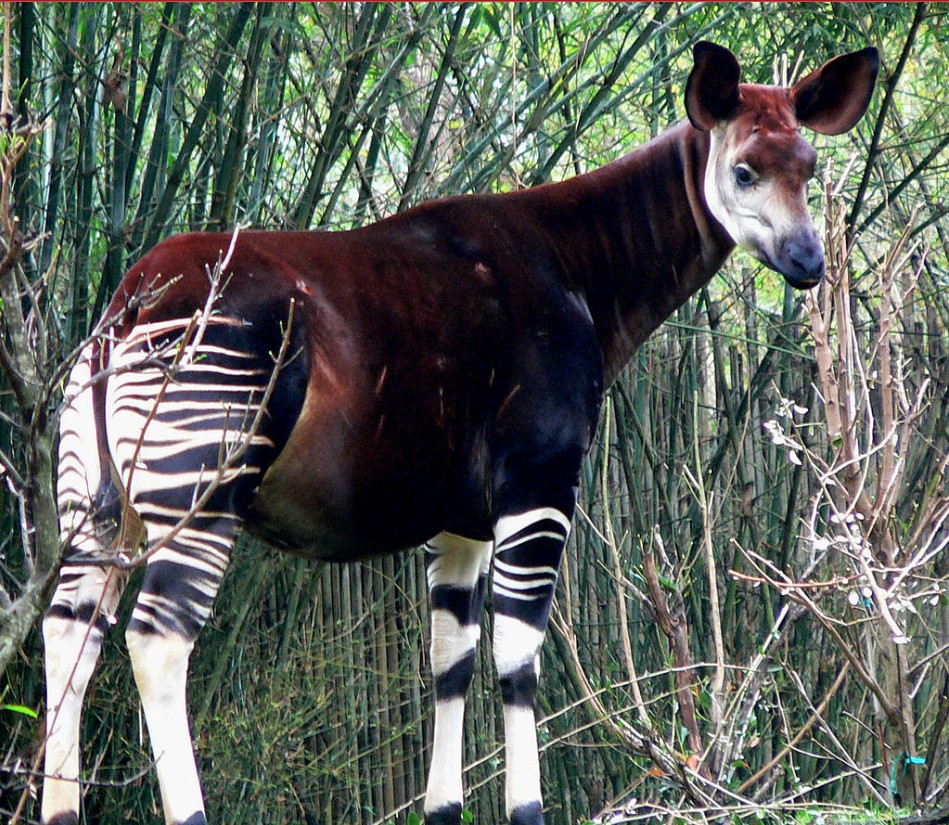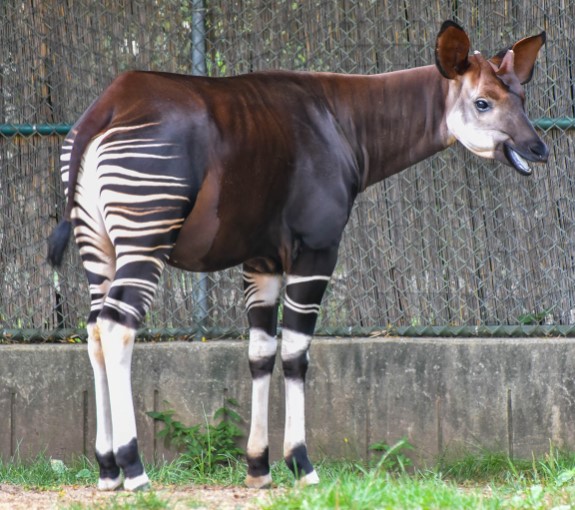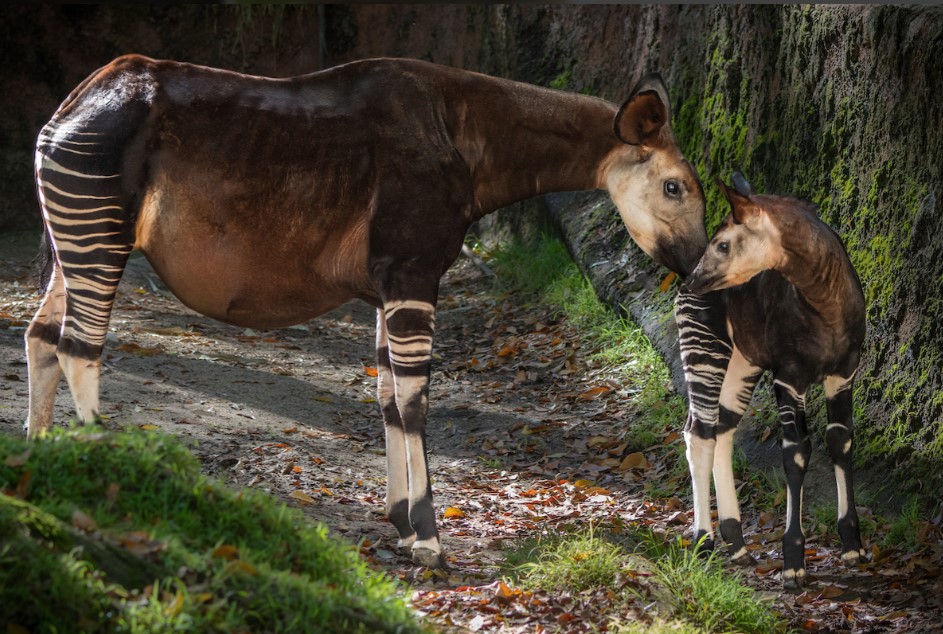





The okapi(Okapia johnstoni) is an animal that most people think is a cross between a giraffe and a zebra but it is a relative of the giraffe. The okapi is the only living relative of the giraffe. It is often known as the forest giraffe. Scientists didn’t know about these animals until 1900. They are mostly found in the Congo rainforests of Africa where they mostly feed on leaves and other vegetation.
Okapis have black and white horizontal stripes on their hindquarters and front legs that mostly help a young okapi follow its mother in the forest where it lives. Their coat is chocolate to reddish brown and they mostly stand about 5 ft tall. They have a long neck and large ears. Their coat is also thick and oily to help keep them dry from the rain. The structure of their head is similar to a giraffe’s and is gray. Like giraffes, okapis have two horns called ossicones on the top of their head but unlike giraffes, only male okapis have ossicones while the females don’t have any and instead have knobby bumps on their heads. Okapis also have a long, black tongue that they mostly use to strip leaves off of trees like giraffes. Males mostly weigh 440 to 660 pounds while females weigh 495 to 770 pounds. You may think that since okapis are related to giraffes, why are they not as tall as one? The truth is that in their rainforest homes, there are trees with branches hanging down, and roots and tree trunks to dodge at the same time. They have shorter legs and necks to help them get around those obstacles.
Okapis are mostly solitary by nature and come together when it comes to breeding or if a female has babies. They mostly guard their territory with scent glands on their feet which leave behind a sticky, tar-like substance as they walk. They also mark their territory with urine. Okapis mostly communicate by infrasound, which is a sound so low that humans can’t hear it. Females only vocalize when they are ready to mate. They mostly have a gestation period of 14 to 16 months and females mostly give birth to one baby. Like giraffes, okapi newborns can stand up just 30 minutes after being born. They mostly look like their parents but they have a short fringe of hair along the spine, which generally disappears when they are 12 to 14 months old. Mothers will put their babies in a safe secluded spot and return regularly to allow the calf to nurse. At just three weeks old, they start trying solid food and they don’t reach their full size until they are three years old. Okapis are very shy animals and mostly rely on their hearing to warn them of any danger. They are only preyed on by leopards. Their camouflage, the way they communicate, and also the way they are so secretive are some reasons why they are hard to find. The typical lifespan of the okapi is 20-30 years.
Okapis are important forest browsers and their diet mostly consists of leaves, fruit, twigs, buds, and other vegetation. They are very unique in that they are the only known mammal that feeds solely on understory vegetation.
The okapi is listed as Endangered on the IUCN Red List. They’re mostly threatened by habitat destruction and illegal hunting. Due to their secretive nature, it is estimated that only 10,000 to 25,000 okapis remain in the wild. Poachers mostly kill them for their skin and also for bushmeat.